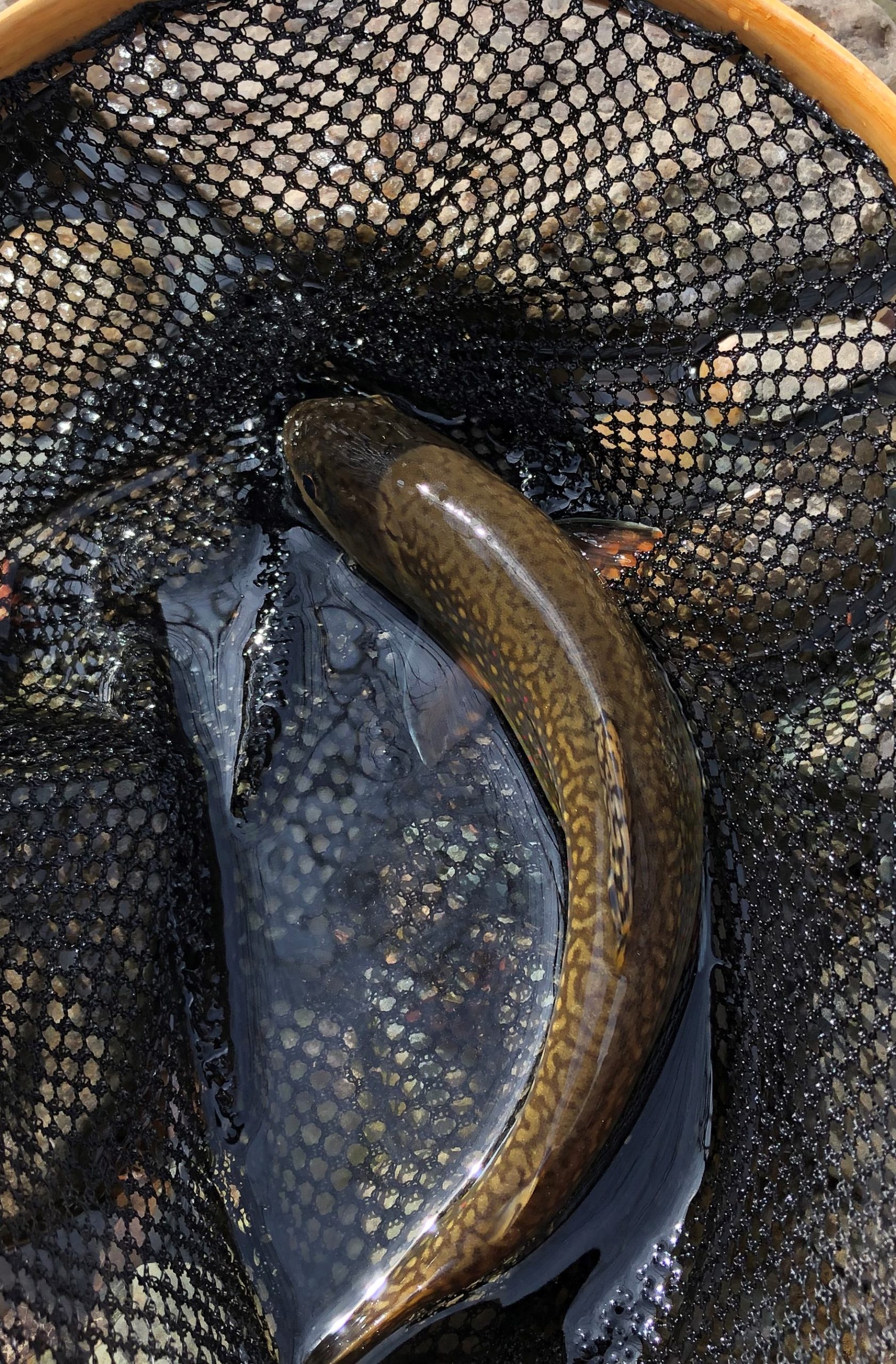Throwing dries to rising trout is one of the reasons we all got into fly fishing. Did you know that the majority of a trout’s diet is subsurface though? So, what are the greatest nymphs for Southern Brook Trout?
You’ll need to find patterns that match the local forage as closely as possible. It’s with those patterns that you’ll have the best chance possible to catch fish.
You can do this by heading to your local brook trout stream and start turning over rocks. Underneath will be the little critters that the trout will be feeding on. Try and match any of the flies below to what you see.
What Kind of Rod and Line do I Need?
Nymphing for southern Brook Trout can be done with just about any type of rod. You should keep in mind the size of water you’re fishing as well as the weight of the rod.
Rod Length
This all depends on the size of the stream you’re fishing. In some spots, you’ll be able to use a 9’rod easily. Some of the smaller areas though will require you to really downsize to a 7′ 6″ or even shorter.
Rod Weight
Whatever you’re comfortable using is the best answer to this. Just keep in mind that if you want to throw a larger fly then you’re going to have a more difficult time with a 0wt as opposed to a 3wt.
Fly Line
Most Brook Trout streams aren’t going to be very deep. So, a floating line will be your best bet. A sink tip or sinking line could spook any fish as you drift your fly through the smaller waters. As always, match the size of your line to the size of your reel and rod.
Southern Brook Trout Nymphs
Alright, now that we’ve got our gear down let’s talk flies. These are going to be some of the greatest nymphs for Brook Trout.
Prince Nymph
The Prince Nymph is great for fishing on its own or as a dry dropper. Select a size #16 or #18, and make sure to keep the tippet light as well. This gives the fly a more realistic look in the water and will help keep line wary fish from being spooked.
Hares Ear Nymph
The Hares Ear is an old-school fly that flat-out works. It’s used to imitate a broad range of aquatic life from scuds, sowbugs, mayfly nymphs, and caddis larvae. If this fly doesn’t have a bead head on it then a little piece of split shot will help get this fly into the strike zone faster.
Pheasant Tail Nymph
This fly is best fished on a dead drift and allowed to sink to the bottom of the stream or river. From here you can either bounce it along the bottom or let the current carry it. By bouncing the fly you are using the “induced take” technique. This is a very effective way of fishing nymphs and can be used with other patterns as well.
Stone Fly Nymph
Not all streams are going to have stoneflies, but you don’t want to be out with a few in your fly box. When these start to emerge in the spring the Trout key in on them. Making it difficult to use other flies. Find somewhere that has a lot of stonies popping off and you could be catching fish all day. These are best in a size #8-#14.
Squirmy Wormy
The fly fishing purists ain’t gonna like this one. Here’s the deal though, the squirmy wormy works and it works really well. Fish it alone, or drop it underneath a dry and allow it drift through the current. A split shot will help get it through deeper pools.
Conclusion
I know it’s tough to not throw dries all day. Especially since Brookies have been known to take a dry fly even in the dead winter with no hatches. Sometimes though you have to go subsurface if you want to consistently catch fish.
So, don’t be afraid of slapping on an indicator and dropping a stonefly pattern off of it. I think you’ll be surprised at how much fun it can be.



